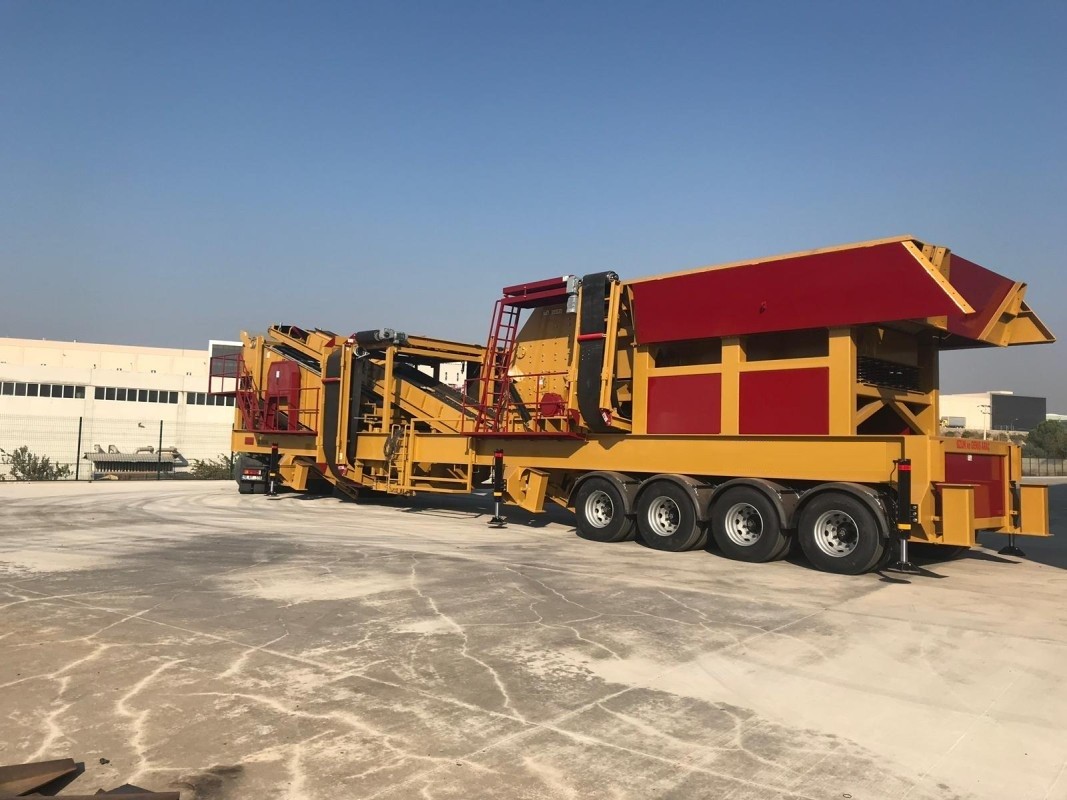A Mobile Crushing and Screening Plant is a highly versatile equipment used in various industries, primarily in construction and mining, to process materials like rocks, gravel, sand, and other aggregates. The plant combines the functions of crushing and screening into a single unit, allowing it to be easily transported from one site to another, providing efficient and cost-effective solutions for on-site material processing.
The design of these mobile units enables them to be used in remote areas where permanent crushing and screening facilities might not be feasible. They are typically mounted on trailers or tracks, making them flexible for different types of terrains and work environments. The mobile crushing and screening plant ensures that raw materials are processed on-site, reducing the cost and environmental impact of transporting materials to distant processing plants
Main Components of a Mobile Crushing and Screening Plant
A typical mobile crushing and screening plant consists of several essential components that work in harmony to achieve the desired product. These components include:
-
Jaw Crusher: This is the first stage in the crushing process. It reduces large stones into smaller sizes, typically from 900mm to 150mm, which can then be processed further in the next stages.
-
Impact Crusher: After the jaw crusher, the material moves into the impact crusher for secondary or tertiary crushing. This type of crusher uses high-speed impact forces to break down the material into smaller, more consistent sizes.
-
Cone Crusher: For fine crushing, a cone crusher may be used to produce high-quality aggregates that are suitable for specific construction requirements.
-
Vibrating Screens: These are used for the classification and separation of crushed materials into various sizes, ensuring that only the required size materials are passed for further processing.
-
Conveyor Belts: Conveyor belts are used to transport materials between the various stages of the plant, ensuring a smooth and continuous operation.
-
Feeding Hoppers: These hoppers are used to feed the raw material into the crushers and screens, making sure the materials are processed uniformly.
-
Control System: The control system monitors the plant’s operations, ensuring everything is functioning smoothly and adjusting the machinery as needed for optimal performance.
How a Mobile Crushing and Screening Plant Works
The operation of a mobile crushing and screening plant can be summarized in several stages:
-
Material Loading: The raw material, usually mined or extracted from quarries, is loaded into the feeding hopper. The size and type of the material will dictate the type of crushers and screens required.
-
Primary Crushing: The first step is the primary crushing stage, where the material is broken down by a jaw crusher or a similar device into smaller pieces. This reduces the size of the raw material, making it more manageable for further processing.
-
Secondary and Tertiary Crushing: After the primary crushing, the material is passed to an impact crusher or a cone crusher for secondary or tertiary crushing. This ensures that the material is crushed into smaller, more uniform sizes.
-
Screening: The crushed material is then passed through vibrating screens that separate the material based on its size. The final product consists of different grades of crushed materials that can be used for various applications, such as construction, road building, or aggregate production.
-
Material Transportation: Once the material has been processed, it is moved via conveyor belts to storage areas or directly to trucks for transportation to other locations.
Advantages of Mobile Crushing and Screening Plants
-
Portability: The ability to easily move the plant from one location to another is a significant advantage, especially in projects where the location may change frequently, such as road construction or mining projects.
-
Cost-Effective: By reducing the need for transporting raw materials to distant processing plants, mobile crushing and screening plants help lower transportation costs and environmental impact.
-
Flexibility: These plants can process a wide range of materials, from hard rocks to softer stones, making them versatile and adaptable to different project requirements.
-
Reduced Downtime: With mobile crushing and screening plants, downtime is minimized since the plant can be set up and operational in a relatively short period.
-
Environmental Impact: By processing materials on-site, the need for transportation is minimized, reducing fuel consumption and emissions associated with transporting large volumes of raw materials.
Aplications of Mobile Crushing and Screening Plants
Mobile crushing and screening plants are widely used in industries such as:
-
Construction: In road construction, concrete production, and other large-scale infrastructure projects, these plants provide a cost-effective solution for processing materials on-site.
-
Mining: In mining operations, mobile crushing plants are used to process ore materials and reduce them to the required size before further processing.
-
Recycling: Mobile crushing and screening plants are increasingly used in the recycling industry to process concrete, asphalt, and other materials, providing sustainable and cost-effective solutions for waste management.
-
Quarrying: Mobile crushing and screening plants are widely used in quarry operations for extracting and processing various aggregates like sand, gravel, and crushed stone.
 English
English
 Le français
Le français
 Türkçe
Türkçe

